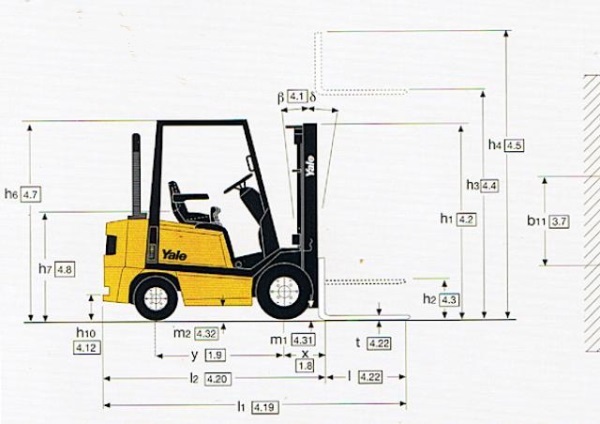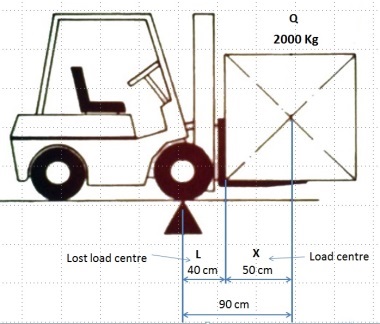Forklift Technical Information
The largest forklift operator training website in the world
![]()
![]()

I have been asked to include this information on the website. How do you calculate the new, reduced, lifting capacity when the load centre is increased on a forklift truck?
On the above sketch the dimensions are as follows:
- L is the dimension from the middle of the front wheel to the front face of the forks with the mast vertical. (cm)
- X is the truck's load centre, (usually 50 cm)
- Q is the normal rated capacity of the forklift truck in Kg.
It is important that the calculations are done from the fulcrum of the truck, i.e. the centreline of the front wheels. Therefore we add L and X together to get to the 90 cm shown above.
Now the load of 2000 kg is multiplied by the distance of 90 cm, 2000 x 90 = 180,000 (this is in Kg/cm)
As an example let's say the load centre is increased by 6 cm to 56 cm.
The new load centre of 56 cm needs to be added to L in order to get back to the drive wheel centreline, i.e. 56 + 40 cm = 96 cm.
Now the 180,000 above is divided by this dimension so:
180,000/96 = 1875. The cm cancel out and the new capacity is 1875 Kg.
Please note that the effects of the weight of attachments have been ignored for these capacity calculations but obviously may have to be taken into account.
Please also note that if the load centre is reduced, it does NOT follow that the forklift's capacity is increased. It may do, but the strength of the forklift's components such as forks, lift chains etc may be compromised. Always check any alteration to capacity with the forklift manufacturer and remember the capacity rating plate may need altering.